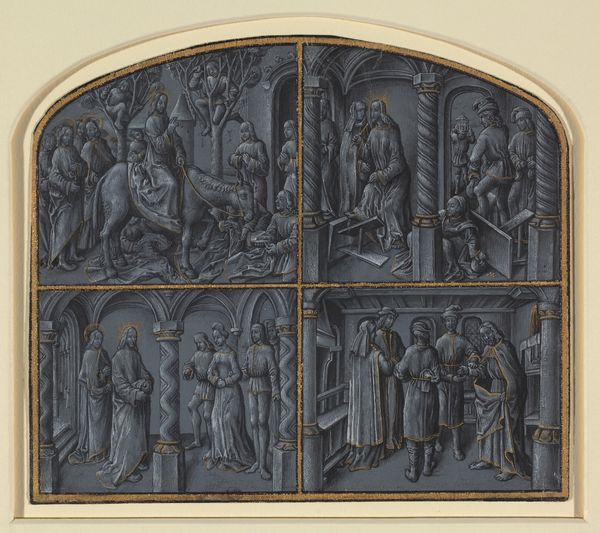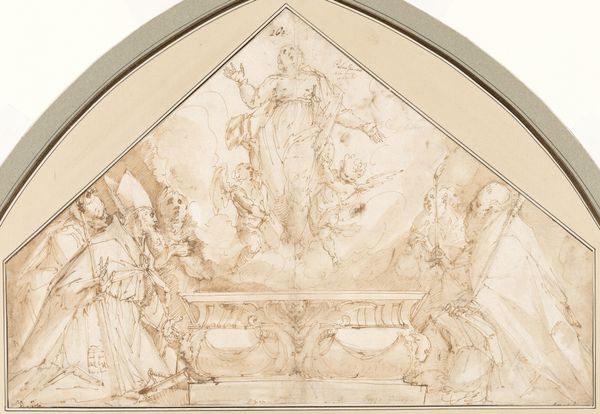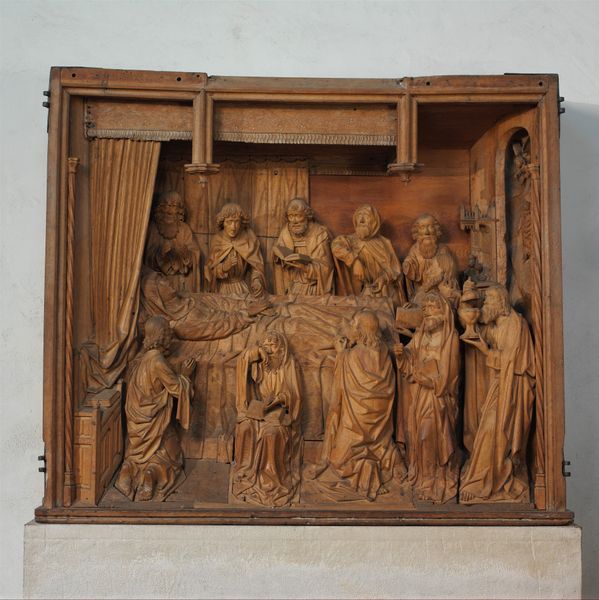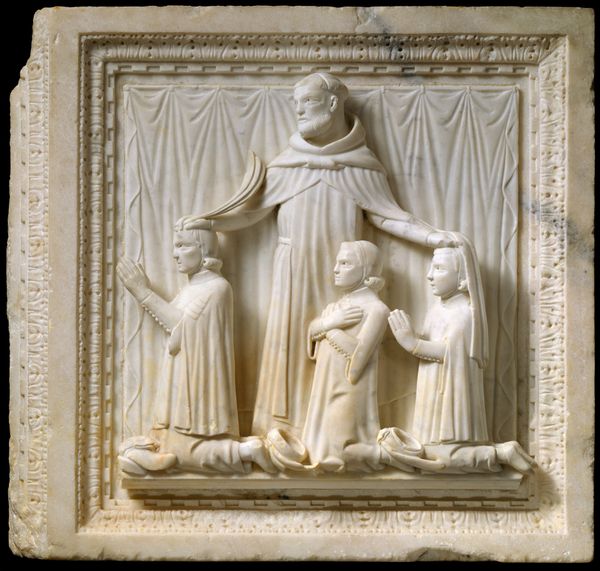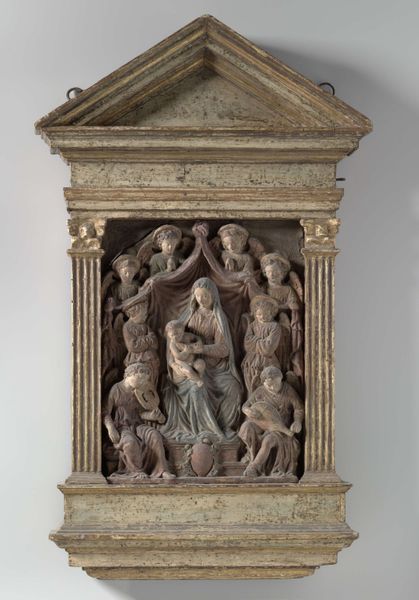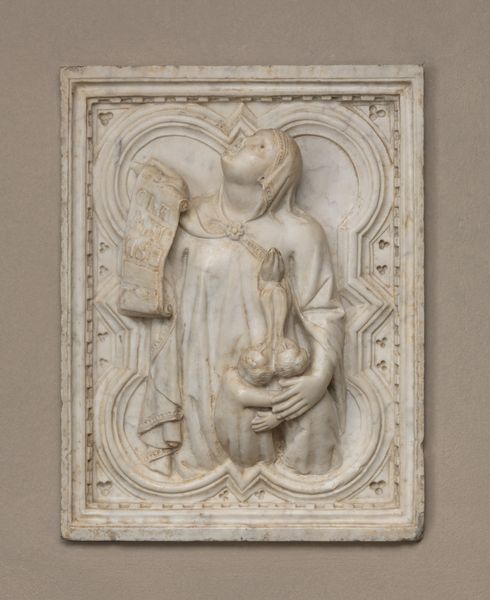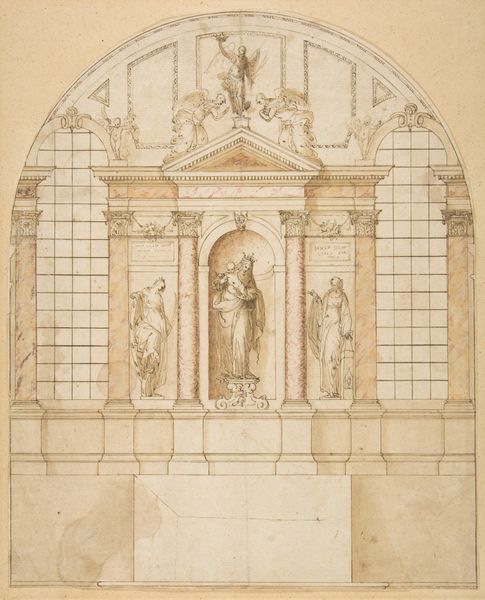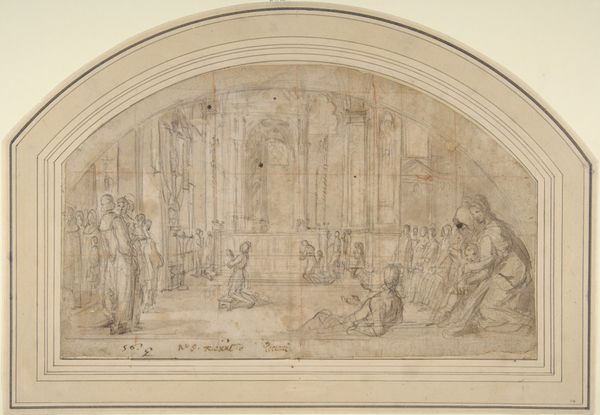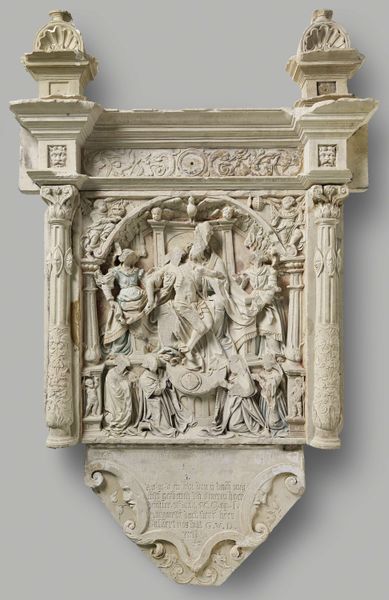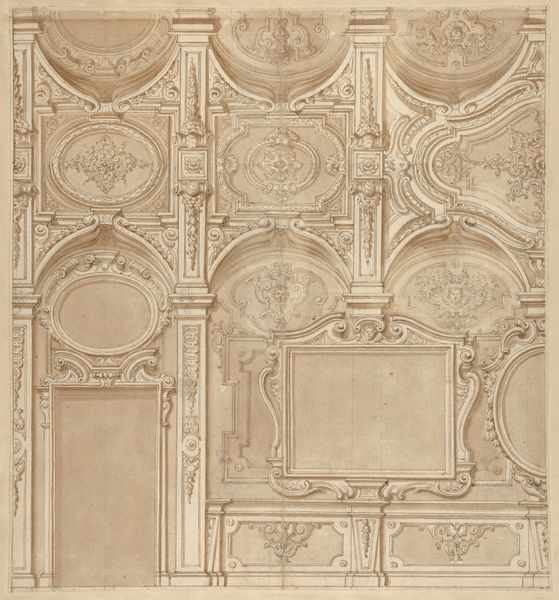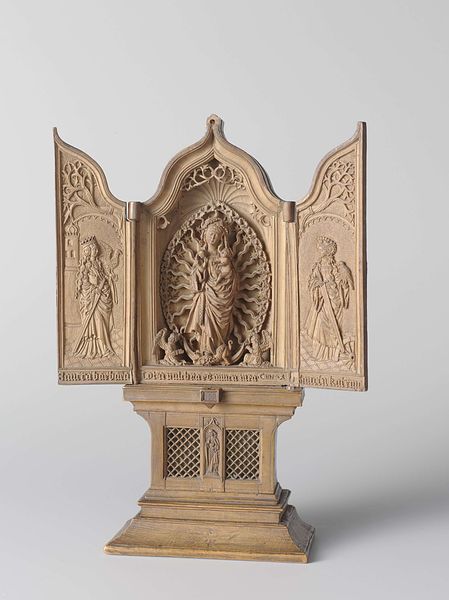
Altarpiece with Christ, Saint John the Baptist, and Saint Margaret 1434
0:00
0:00
relief, sculpture, marble
#
portrait
#
medieval
#
sculpture
#
gothic
#
relief
#
figuration
#
sculpture
#
history-painting
#
marble
#
christ
Dimensions: Overall: 72 x 80 x 5 in., 1614lb. (182.9 x 203.2 x 12.7 cm, 732.1kg) a: central panel: 505lb. (229066.5g) b: Top center: 210lb. (95255.4g) c: Saint John (L): 329lb. (149233.4g) d: Saint Margaret (R): 194lb. (87997.8g) e: Kneeling Angel: 121lb. (54885.2g) f: Bottom Central Panel: 181lb. (82101.1g) g: Plinth (L): 28lb. (12700.7g) h: Modern Plinth (R): 28lb. (12700.7g) i: Angel Wing (Modern): 18lb. (8164.7g)
Copyright: Public Domain
Curator: We're looking at "Altarpiece with Christ, Saint John the Baptist, and Saint Margaret," a marble relief by Andrea da Giona from 1434. It's part of the collection at the Metropolitan Museum of Art. Editor: My initial response is a sense of powerful symmetry, but there is also the heavy atmosphere, the serious faces all create a very solemn feeling. Curator: Da Giona created this during a fascinating period of artistic transition. Gothic art, with its focus on religious symbolism, was evolving into the early Renaissance. The altarpiece reflects both traditions. We have that stylized gothic frame mixed with the humanism of the coming era, particularly evident in the individualized facial features. Editor: Exactly, I see that push and pull. How do you interpret the placement of St. John and St. Margaret flanking Christ? Is that hierarchy at play? Curator: Certainly, spatial positioning indicates the importance of figures within the religious structure, absolutely demonstrating that strict hierarchy of importance in medieval church design and understanding. The church dedicated an enormous amount of care towards ensuring such things were in order. St. John the Baptist represents a call to faith, and St. Margaret’s story involves conquering a dragon through faith, further underscoring the piece's moral intentions. Editor: Dragons have been such a popular theme through art history. Dragons also carry a loaded representation within today's framework for many gender and sexuality topics. Do you think da Giona could have understood some implications about women, power, and monsters that resonate today? Curator: It’s not likely he considered a feminist viewpoint on monstrosity but what this piece underscores, regardless of intentions, is how these stories can still provoke dialogues on the themes and powers that concern our modern perspectives on selfhood. The Altarpiece doesn't exist in isolation. It continues to resonate. Editor: Well, I see it less as an isolated artifact and more as an entry point. It is amazing to reflect on how images transform as cultures and generations view it from changing points of view. Curator: Agreed, we use historical study of images and pieces to examine culture itself. Editor: I'm leaving here thinking of power and storytelling and where the next generations may go. Curator: And that art, as a reflection of its time, forever speaks to both where we’ve been, and potentially, where we’re going.
Comments
No comments
Be the first to comment and join the conversation on the ultimate creative platform.
